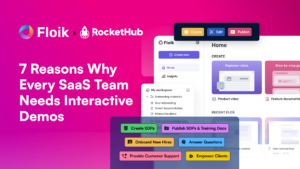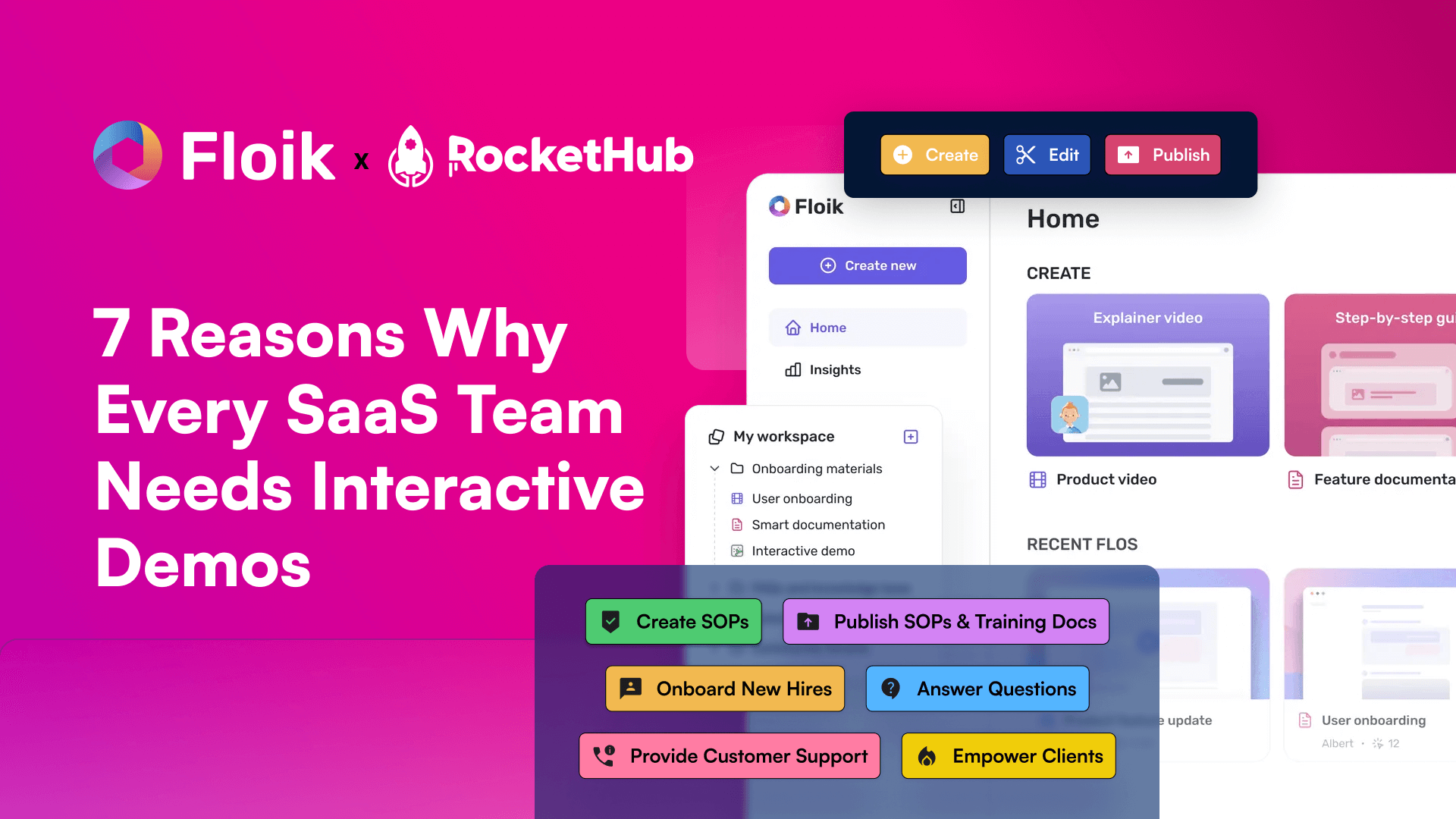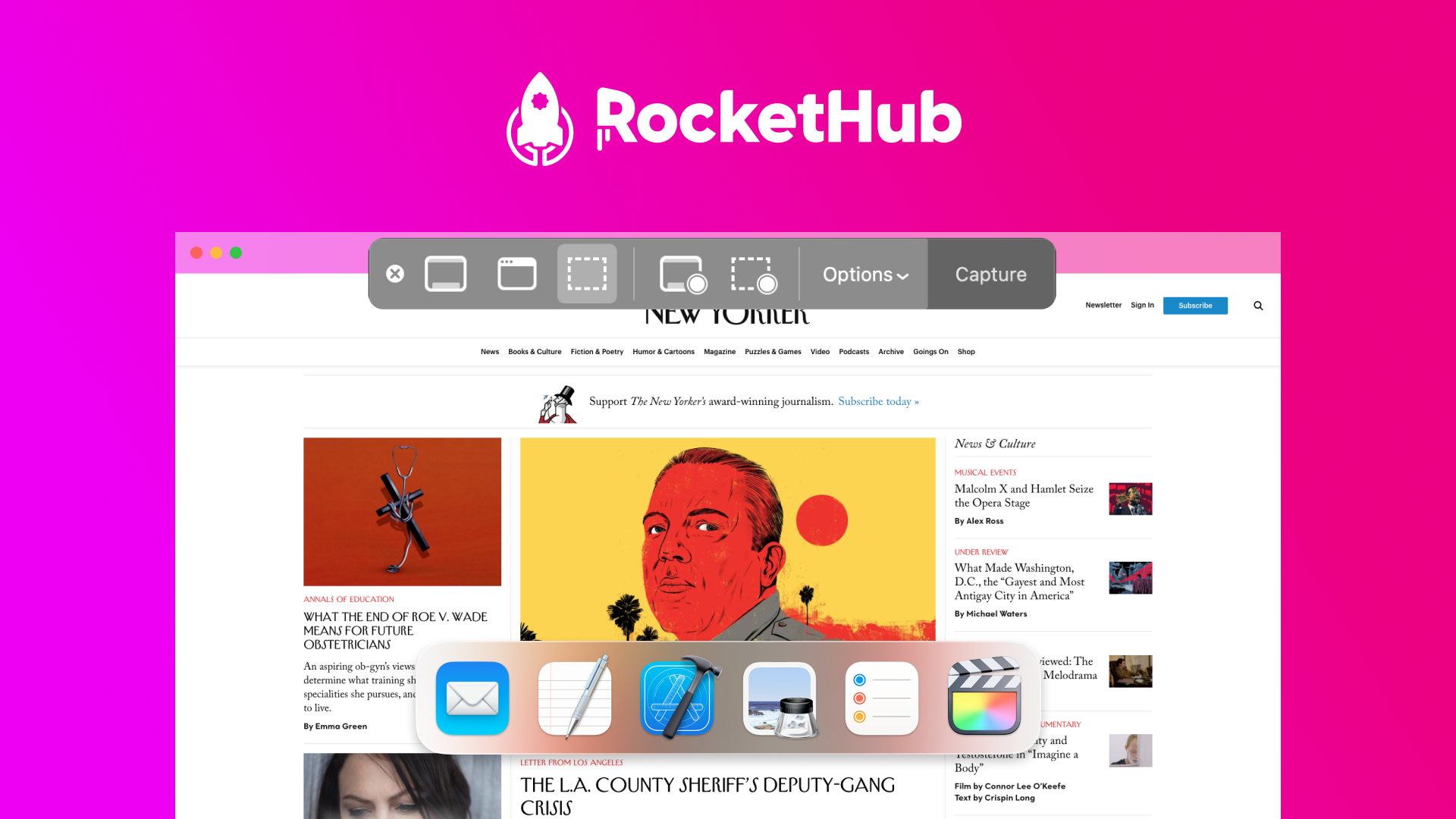
10 Steps to Start a Successful Side Hustle
- Angel Alfred
- May 17, 2023

The gig economy is a rapidly growing trend, and more people are seeking ways to supplement their income through a side hustle.
But what exactly is a side hustle? A side hustle can be defined as a passion project or a small business that generates extra income alongside a regular job. Starting a side hustle can be a daunting task, but with the right mindset, approach, and tools, anyone can start and grow a successful side hustle.
That’s why in this blog post, we’re going to share ten steps to start a successful side hustle.
Benefits of a Side Hustle

There are several benefits to having a side hustle. Here are some key advantages:
- One of the primary benefits of a side hustle is the opportunity to earn extra money. It can supplement your primary income and provide financial stability. The additional income can be used to pay off debt, save for future goals, or pursue personal interests.
- Side hustles often offer greater flexibility in terms of working hours and location. You can choose when and where to work, allowing you to balance your side hustle with other commitments such as a full-time job, family responsibilities, or education.
- A side hustle provides an opportunity to develop new skills or enhance existing ones. Whether it’s learning about marketing, sales, customer service, or managing finances, you can gain valuable experience that can benefit your career advancement or personal growth.
- Many side hustles are born out of personal interests or hobbies. Starting a side hustle related to your passion allows you to turn something you love into a source of income. It brings a sense of fulfillment and enjoyment as you engage in work that aligns with your interests.
- Relying solely on a single source of income can be risky. A side hustle allows you to diversify your income streams, reducing financial vulnerability. If one income source is affected, you have another to fall back on, providing a sense of security.
10 Steps to Start a Successful Side Hustle
These steps are based on our years of experience working with entrepreneurs and small business owners. We’ve distilled the most critical steps into this guide to help you navigate the murky waters of starting a side hustle.
Identify Your Passion and Skills
Identify your passion and skills as they form the foundation of your venture. Take some time to reflect on activities that genuinely excite and motivate you. Consider the things you enjoy doing in your free time, the subjects you find yourself constantly reading or learning about, or the hobbies that bring you joy.
Here’s how you can do it:
Reflect on Your Interests and Hobbies
Reflecting on your interests and hobbies helps you uncover potential side hustle ideas that can be both fulfilling and profitable. Consider the activities that captivate your attention and energize you. Are there any specific niches or industries within those interests that you could explore?
For example, if you’re passionate about fitness and nutrition, you could consider offering personal training services or starting a healthy meal delivery service.
Assess Your Existing Skills and Expertise
Assessing your existing skills and expertise is an essential step in identifying viable side hustle opportunities. Take an inventory of the skills you’ve acquired through education, work experience, or personal development.
For instance, if you have a background in marketing, you could offer freelance marketing services to small businesses or start a blog sharing marketing insights. Leveraging your existing skills allows you to offer value and stand out in your chosen field.
Determining How They Can Be Monetized
Once you’ve identified your passions and assessed your skills, it’s important to determine how they can be monetized effectively. Explore different ways to translate your passions and skills into products or services that people are willing to pay for.
For example, if you have a passion for crafting and are skilled at creating handmade jewelry, you could sell your creations online through an e-commerce store or platforms like Etsy.
Research Market Opportunities
It’s essential to research market opportunities to identify viable ideas that align with your interests and have the potential for success. Start by exploring various industries, niches, and market trends. Look for areas where there is demand or underserved markets. We have explained it in detail further below.
Identifying Potential Side Hustle Ideas
Once you have conducted initial market research, it’s time to narrow down and identify specific side hustle ideas. Consider your passions, skills, and market insights to brainstorm potential business concepts. Make a list of ideas that excite you and align with your expertise.
Don’t be afraid to think outside the box and explore unique angles or combinations of interests and skills. Aim for ideas that have the potential to fulfill a need, solve a problem, or provide value to a specific target audience.
Conducting Market Research to Assess Demand and Competition
After identifying potential side hustle ideas, it’s crucial to conduct thorough market research to assess the demand and competition. Start by defining your target audience and understanding their needs, preferences, and pain points. Use surveys, interviews, and online research to gather insights.
Analyze the existing competition within your chosen market to understand its strengths, weaknesses, and unique selling propositions. This research helps you refine your side hustle idea, identify opportunities to differentiate yourself and make informed decisions about positioning and marketing strategies.
Evaluating the Profitability and Sustainability of Different Opportunities
While passion and interest are important, it’s equally vital to evaluate the profitability and sustainability of different side hustle opportunities. Assess the revenue potential and profitability of each idea by estimating the costs involved, pricing considerations, and potential revenue streams.
Consider factors such as scalability, market saturation, and long-term sustainability. Ask yourself if the idea has the potential for growth and if there are opportunities for diversification or expansion in the future.
Set Clear Goals
Setting clear goals is essential for the success of your side hustle. Begin by defining what you want to achieve both in the short term and the long term.
Defining Your Short-Term and Long-Term Objectives
Once you have established your goals, break them down into short-term and long-term objectives. Short-term objectives are the milestones or targets that contribute to your overall goals and can be accomplished within a few weeks or months.
Long-term objectives, on the other hand, are the bigger-picture achievements that may take several months or even years to reach. By defining these objectives, you create a roadmap for your side hustle and can track your progress along the way.
Establishing Measurable and Achievable Targets
When setting goals and objectives, it’s important to make them measurable and achievable. Measurable targets allow you to track your progress and determine whether you’re on the right path. For example, instead of setting a vague goal like “increase sales,” specify a target like “increase sales by 20% within the next three months.”
Achievable targets are realistic and within your control. Consider your available resources, time constraints, and capabilities when setting targets. It’s better to set ambitious yet attainable goals that stretch you without being overwhelming.
Breaking Down Goals into Actionable Steps
Start by identifying the key actions and tasks required to achieve each objective. These steps should be specific, time-bound, and manageable. Create a timeline or project plan that outlines the sequence of tasks, deadlines, and dependencies.
By breaking down your goals into actionable steps, you can focus on the immediate tasks at hand and make steady progress toward your overall objectives. Regularly review and adjust your action plan as needed to stay on track.
Create a Business Plan
Creating a business plan is crucial for the success of your side hustle. Start by outlining the purpose of your side hustle, and then clearly articulate why you are starting this venture and what you aim to achieve as explained below.
Defining Your Unique Value Proposition
Differentiate your side hustle by defining your unique value proposition. Identify what sets you apart from competitors and why customers should choose your offerings. Determine the key benefits and advantages your products or services provide.
Defining Your Products or Services and Pricing Strategy
Clearly define the products or services you will offer in your side hustle. Outline the features, benefits, and any variations or packages available. Consider pricing strategies such as cost-plus pricing, competitive pricing, or value-based pricing.
Take into account factors such as production costs, market demand, and perceived value. Ensure that your pricing strategy aligns with your target market and supports your revenue goals.
Developing a Marketing and Sales Plan
Develop a comprehensive marketing and sales plan to promote your side hustle effectively. Identify the marketing channels that will reach your target market most effectively, such as social media platforms, online advertising, or local networking events.
Create a content strategy to engage your audience and build brand awareness. Determine how you will generate leads, convert them into customers, and retain them through customer relationship management strategies.
These steps help you clarify your business objectives, identify your target customers, differentiate yourself from competitors, define your offerings and pricing strategy, and outline effective marketing and sales strategies to reach your target audience.
Allocate Time and Resources
When starting a side hustle, it’s important to allocate time and resources effectively to ensure the smooth operation and growth of your venture. Let’s read about it in detail.
Determining Financial Resources
Alongside time allocation, it’s crucial to determine the financial resources needed to start and sustain your side hustle. Evaluate the upfront costs required to launch your ventures, such as equipment, supplies, or website development.
Consider ongoing expenses such as marketing, inventory, or software subscriptions. Calculate your monthly budget to understand the financial commitments involved. If needed, explore options such as personal savings, small business loans, or crowdfunding to secure the necessary funds.
Finding Ways to Optimize Your Schedule
To make the most of your available time, find ways to optimize your schedule. Identify any time wasters or activities that don’t align with your goals and consider how you can reduce or eliminate them. Look for opportunities to streamline your routine, delegate tasks, or outsource certain activities.
Leverage productivity techniques such as time blocking or prioritization to ensure that you focus on the most important and high-impact tasks for your side hustle. Embrace tools and technologies that can automate or simplify repetitive or time-consuming processes.
Allocating Resources Efficiently
Efficiently allocating resources is vital for the success and sustainability of your side hustle. Prioritize your spending based on the areas that have the greatest impact on your business’s growth and profitability. Be strategic when investing in marketing and advertising efforts, choosing channels and campaigns that resonate with your target audience.
Seek ways to optimize costs without compromising quality, such as negotiating with suppliers or exploring cost-effective alternatives. Regularly evaluate your resource allocation to ensure you are maximizing your return on investment.
BRemember to regularly review and adjust your approach as your side hustle evolves, allowing you to adapt to changing circumstances and optimize your allocation strategies accordingly.
Build Your Brand
Building a strong brand is essential for the success of your side hustle. Start by choosing a name that reflects your business and resonates with your target audience. Consider factors such as uniqueness, memorability, and domain availability.
Developing a Professional Website or Online Presence
In today’s digital age, having a professional website or online presence is crucial for your side hustle’s success. Create a visually appealing and user-friendly website that showcases your products or services, highlights your brand story, and provides essential information to visitors.
Ensure that your website is mobile-responsive and optimized for search engines.
Utilize social media platforms relevant to your target audience to establish a strong online presence. Engage with your audience, share valuable content, and build a community around your brand.
Establishing a Consistent Brand Voice and Visual Identity
Consistency is key when it comes to building a strong brand. Establish a consistent brand voice that reflects your brand personality and resonates with your target audience.
Define your tone, language, and communication style across all touchpoints, including your website, social media, customer interactions, and marketing materials. Ensure that your brand voice aligns with your brand values and resonates with your audience’s preferences.
In addition to your brand voice, develop a cohesive visual identity that represents your brand. Choose a color palette, typography, and design elements that reflect your brand personality and appeal to your target audience.
Create a logo and visual assets that are memorable and aligned with your brand story. Consistently apply these visual elements across all your branding materials, both online and offline, to create a recognizable and cohesive brand image.
By choosing a name and creating a memorable brand identity, developing a professional website or online presence, and establishing a consistent brand voice and visual identity, you build a strong foundation for your side hustle brand.
A well-crafted brand helps you differentiate yourself, build trust with your target audience, and create a lasting impression.
Develop a Marketing Strategy
Developing a marketing strategy is essential for effectively promoting your side hustle. Begin by identifying your target audience, and understanding their demographics, needs, and preferences. This will help you tailor your marketing efforts to reach the right people.
Crafting a Compelling Value Proposition and Messaging
Crafting a compelling value proposition and messaging is crucial for capturing your target audience’s attention and persuading them to choose your side hustle. Clearly communicate the unique benefits and value your products or services offer. Focus on addressing how your side hustle solves their problems or fulfills their needs better than competitors.
Develop a concise and compelling elevator pitch that encapsulates the essence of your value proposition. Ensure your messaging resonates with your target audience’s aspirations, desires, and values.
Utilizing Online and Offline Marketing Tactics
To effectively promote your side hustle, utilize a combination of online and offline marketing tactics. Online tactics may include social media marketing, content creation, email marketing, search engine optimization (SEO), and influencer collaborations.
Leverage the power of social media platforms to engage with your target audience, share valuable content, and build a community around your brand. Develop a content strategy that showcases your expertise, educates your audience, and establishes you as a trusted authority in your niche.
Measure and Refine Your Marketing Efforts
As you implement your marketing strategy, it’s crucial to measure and refine your efforts. Set clear goals and key performance indicators (KPIs) to track your marketing success. Monitor metrics such as website traffic, social media engagement, conversion rates, and customer feedback.
Analyze the data to identify areas of improvement and make data-driven decisions to optimize your marketing campaigns. Experiment with different tactics, messages, and channels to find what resonates best with your target audience.
Continuously refine your marketing strategy based on insights and feedback, ensuring that your efforts drive meaningful results for your side hustle.
Start Small and Test the Market
Starting small and testing the market is a critical step in building a successful side hustle. Launch a minimum viable product or service to gather feedback from your target audience. This can be a prototype, a simplified version of your product, or a test run of your service.
This approach allows you to get your product or service in the hands of customers quickly and collect valuable feedback that can help you refine your offering.
Seeking Customer Input and Making Improvements
After launching your minimum viable product or service, seek customer input and make improvements based on their suggestions. Gather feedback through surveys, social media, or other communication channels to understand what customers like and dislike about your offering.
This feedback can help you identify areas of improvement and make necessary adjustments to enhance the customer experience.
By continuously iterating and refining your product or service based on customer feedback, you can develop a more refined and compelling offering that better meets the needs of your target audience.
Using Social Media and Other Platforms
Social media and other online platforms are powerful tools for generating initial sales and testing the market. Leverage social media platforms to connect with potential customers, build brand awareness, and generate interest in your offering.
Share updates on your progress, post photos and videos of your product or service in action and engage with your followers to build a community around your brand. Utilize online marketplaces and other platforms to expand your reach and generate initial sales.
This can help you validate your product or service’s market demand and gain valuable insights into customer preferences and behavior.
Network and Collaborate
Networking and collaborating are essential for expanding your reach and creating valuable connections in your side hustle journey. By actively engaging with others in your industry, you can gain insights, opportunities, and support.
Here are a few strategies to effectively network and collaborate:
Join Relevant Industry Groups or Associations
Joining industry-specific groups or associations allows you to connect with like-minded individuals and professionals in your field. These communities provide valuable networking opportunities, access to industry knowledge, and potential collaborations.
Participate in discussions, share your expertise, and actively engage with other members to establish meaningful connections and build your reputation within the industry.
Attend Conferences, Workshops, and Networking Events
Attending conferences, workshops, and networking events provides an excellent platform to meet industry experts, potential clients, and collaborators. These events offer opportunities to learn from experienced professionals, gain insights into industry trends, and make valuable connections.
Be proactive in introducing yourself, exchanging business cards, and following up with individuals you meet to nurture those connections.
Seek Collaborations or Partnerships
Collaborating with others in your industry or related fields can significantly expand your reach and enhance your offerings. Look for complementary businesses or professionals who share a similar target audience but offer different products or services.
Seek out collaboration opportunities such as joint marketing campaigns, cross-promotions, or co-creating content. These collaborations allow you to tap into new networks, leverage each other’s strengths, and provide added value to your customers.
Utilize Online Platforms and Communities
Engage in relevant social media groups, forums, or online communities where professionals in your niche gather. Share insights, answer questions, and contribute valuable content to establish yourself as a knowledgeable and reliable resource.
Actively seek out potential collaborators or partnership opportunities within these online spaces!
Monitor Progress and Adapt
Monitoring the progress of your side hustle is crucial to its long-term success. It enables you to assess your performance, identify areas for improvement, and make necessary adjustments to your strategy.
Here are some key steps to effectively monitor progress and adapt:
Track Key Metrics
Identify and track key metrics that align with your side hustle’s goals. These metrics could include sales revenue, customer acquisition rate, conversion rate, website traffic, social media engagement, or customer satisfaction ratings.
Regularly analyze these metrics to understand your performance and progress toward your objectives. Use tools such as analytics platforms like Google Analytics, CRM systems, or social media analytics to gather accurate data and insights.
Analyze Customer Feedback and Market Trends
Customer feedback and market trends provide valuable insights into the perception of your side hustle and the evolving needs of your target audience.
Encourage customers to provide feedback through surveys, reviews, or direct communication channels. Pay attention to their comments, suggestions, and pain points.
Stay Adaptable and Make Necessary Adjustments
Flexibility and adaptability are essential traits for successful side hustlers. Regularly review and evaluate your strategy, considering the data and insights gathered. Identify areas that require improvement or adjustments.
This might involve refining your product or service, updating your marketing approach, revising pricing strategies, or exploring new customer segments. Embrace a growth mindset and be willing to make changes based on the evolving needs of your target audience and market conditions.
Experiment and Test New Ideas
To stay ahead and continuously improve, be open to experimentation. Test new ideas, approaches, or marketing campaigns on a small scale to gauge their effectiveness. Use A/B testing, split testing, or pilot projects to gather data and insights before scaling up.
Monitor the results and learn from both successes and failures. This iterative approach allows you to refine your strategies and optimize your side hustle’s performance over time.
You may also like: 3 Awesome Strategies For Dealing With Startup Competition
Wrapping Up
Starting a successful side hustle requires dedication, hard work, and a willingness to learn from your mistakes. Remember to focus on your passions and skills, conduct market research, set clear goals, and create a plan of action. And yes, don’t be afraid to seek out resources and support, whether it be through online communities, mentorship, or education!
Share This Post
Angel Alfred
Angel is a digital marketer, a mental health speaker, and above all, a writer. She loves being a part of the RocketHub team and is keen on learning and taking over new challenges every day!
Table of Contents
Get The Latest Updates
Subscribe To Our Weekly Newsletter
Sign up below to be one of the first crew members onboard and get early access to amazing deals.
Recent Posts


Social Media
Categories
Related Posts

Lifetime Deal Platforms
The best lifetime deal platforms for software. Platforms lik RocketHub scour the web for the highest quality products to bring buyers the best lifetime deals on their platform.

How to Work for Yourself + 13 Solo Business Ideas
Do you ever wonder if being your own boss could truly set you free? In this article, we’ll explore the theory that unleashing entrepreneurial freedom

7 Reasons Why Every SaaS Team Needs Interactive Demos
Making a Case for Interactive Demos: 7 Reasons Why Every SaaS Team Needs Them Let me paint a scenario for you. You want to buy


